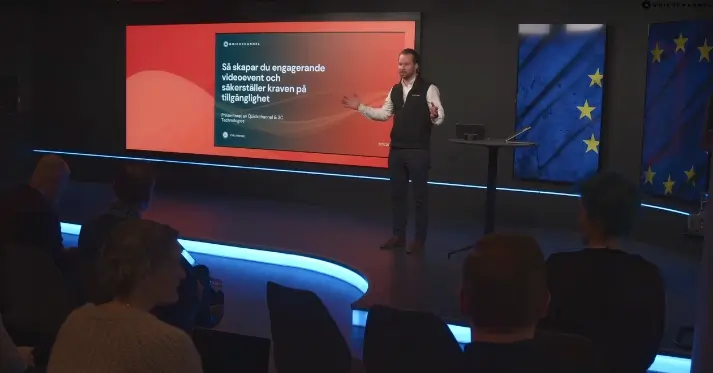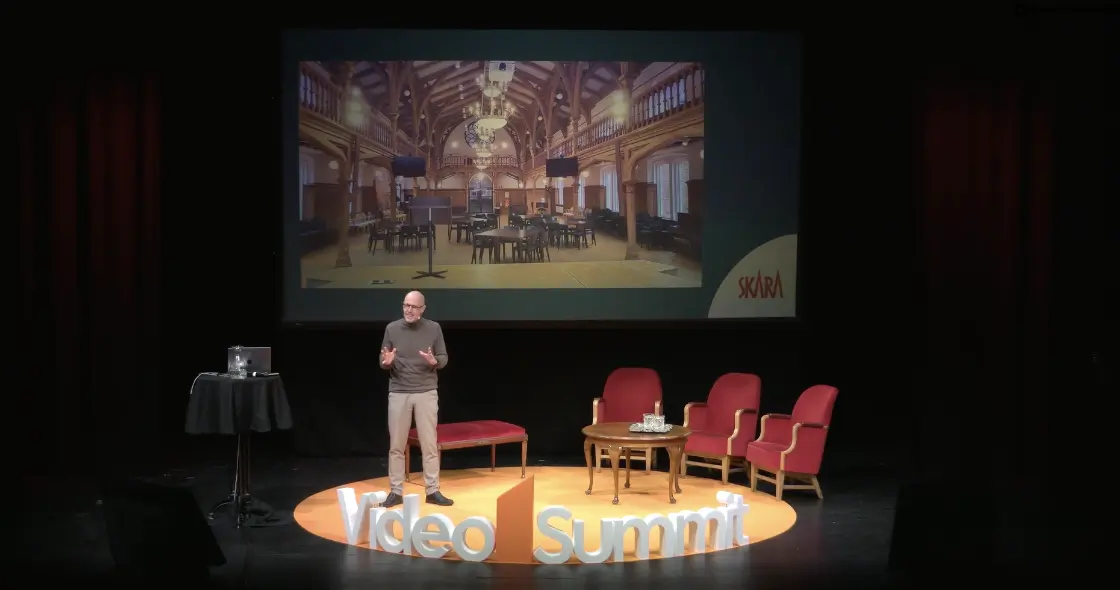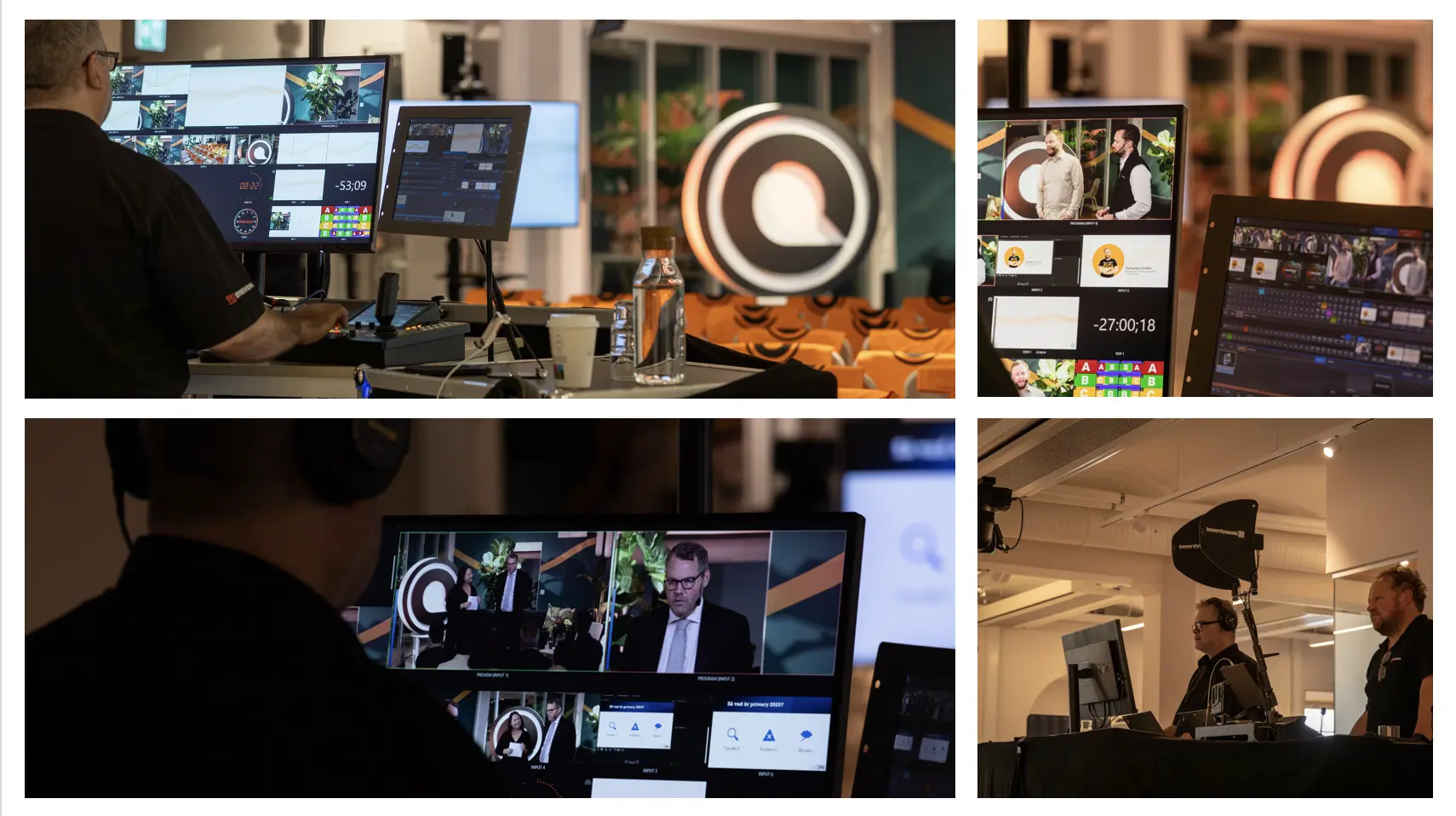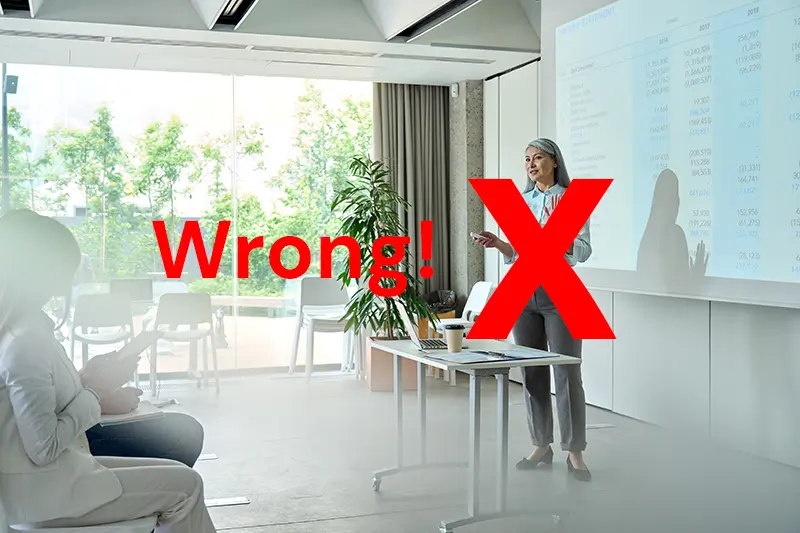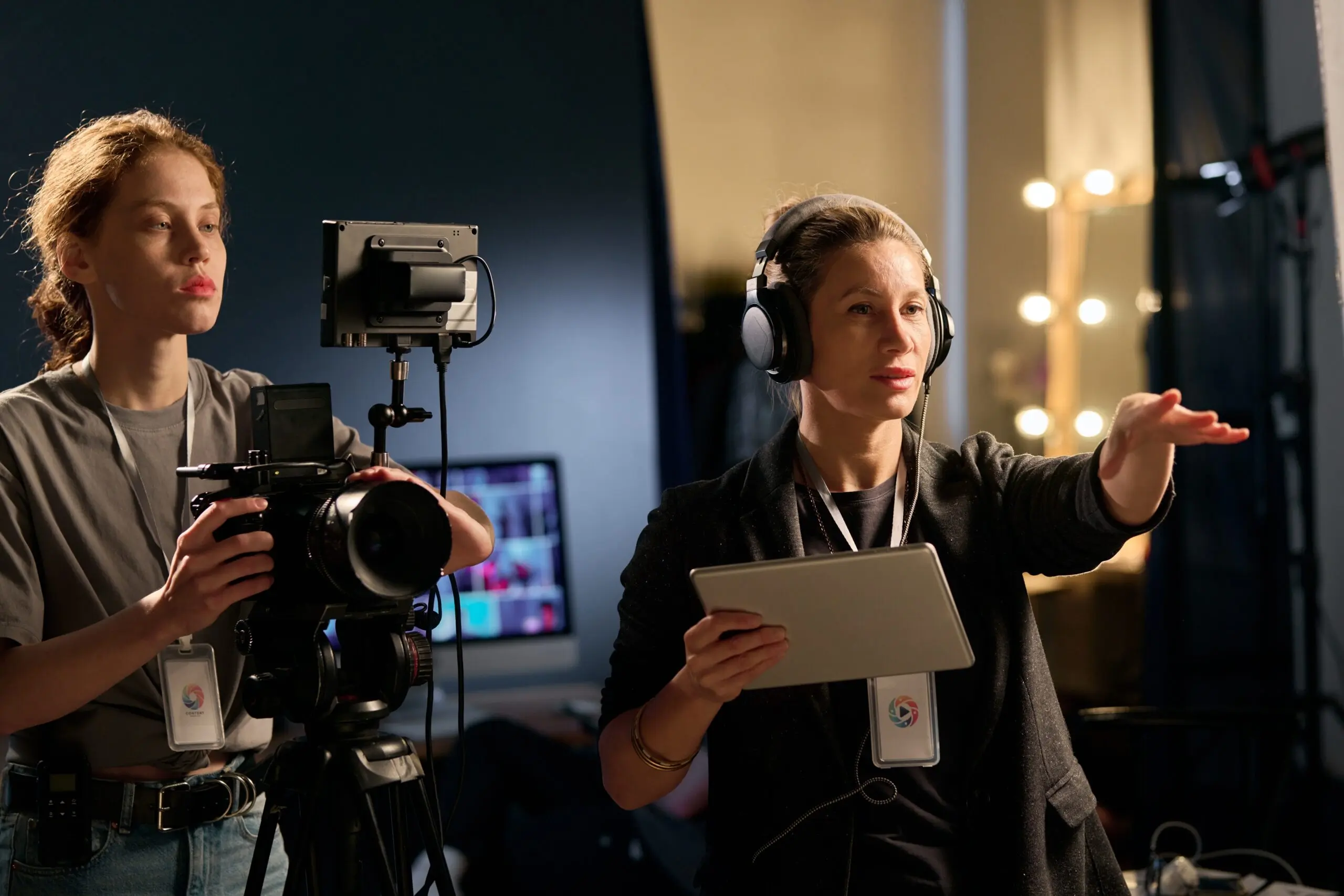In the era of remote work and virtual meetings, mastering the art of video conferencing is essential for effective communication. Whether you’re hosting a lecture, conference, or meeting with presenters and slide presentations, ensuring a smooth production can make all the difference. Here are some tricks to make the production process easier:
On Stage
- Coordinate Movements: Prior to the session, have a conversation with the presenters about stage movements. Advise them to move deliberately and avoid excessive pacing, which can disorient the audience. Smooth, purposeful movements make it easier for the camera operator to anticipate and capture shots effectively.
- Positioning: If there are multiple presenters, they can choose to stand close together to appear in the same frame or step aside when not speaking to allow the active speaker to take center stage. Communicate camera placements to the presenters so they can address the audience while looking at the camera. Rehearse if necessary to determine the optimal moments for close-ups.
Audio Management
- Volume Control: Encourage presenters to modulate their tone but avoid shouting, as the audience will hear them at the same volume level. Shouting can distort the sound quality and make it harder for viewers to understand. Emphasize the importance of clear articulation over loudness.
- Mic Etiquette: Familiarize presenters with the mute function on their microphones for periods of silence. Remind them that an open microphone captures all sounds, which could be recorded unintentionally. Similarly, remind them to unmute before speaking to avoid missing any dialogue.
- Microphone Handling:
- Handheld microphones only pick up sound directly in front of them. Instruct presenters to adjust the microphone position as they turn their heads to maintain consistent audio quality.
 Placing a hand microphone under the chin ensures uniform volume, ensuring consistent sound even as the presenter moves around.
Placing a hand microphone under the chin ensures uniform volume, ensuring consistent sound even as the presenter moves around.
-
- Whenever possible, use head-worn microphones for consistent sound pickup, allowing presenters to use their hands for gestures without compromising audio quality.

-
- Advise presenters to minimize loud breathing, coughing, or yawning, as all sounds will be captured. Eating or drinking should be avoided during the session, but if necessary, remind them to mute their microphone temporarily.
- Even with interference-resistant microphones, it’s best to keep mobile phones away to prevent unwanted sounds.
- With head-worn microphones, position the microphone near the mouth on the cheek for optimal audio capture, avoiding placement inside or directly in front of the mouth.
- Audience Interaction: If audience participation is expected, designate a person to handle handheld microphones to capture questions or comments. Ensure presenters repeat the audience’s input for recording purposes if no microphone is available in the room.
- Corrections and Guidance: Don’t hesitate to correct presenters or audience members if they misuse microphones. Clear communication ensures smooth audio production.
- Battery Monitoring: For wireless microphones, ensure the presenter or a designated technician periodically checks the battery level. Prompt them to alert you if the battery is running low to prevent disruptions.
By implementing these tips, you can significantly enhance the quality and professionalism of your video conferences. Stay tuned for Part 2, where we’ll delve into presentation techniques and projector usage.
